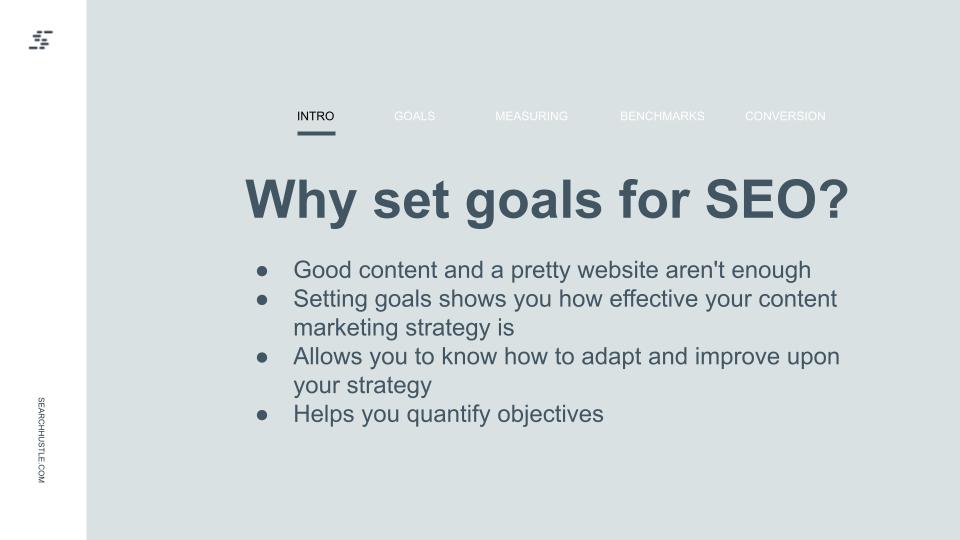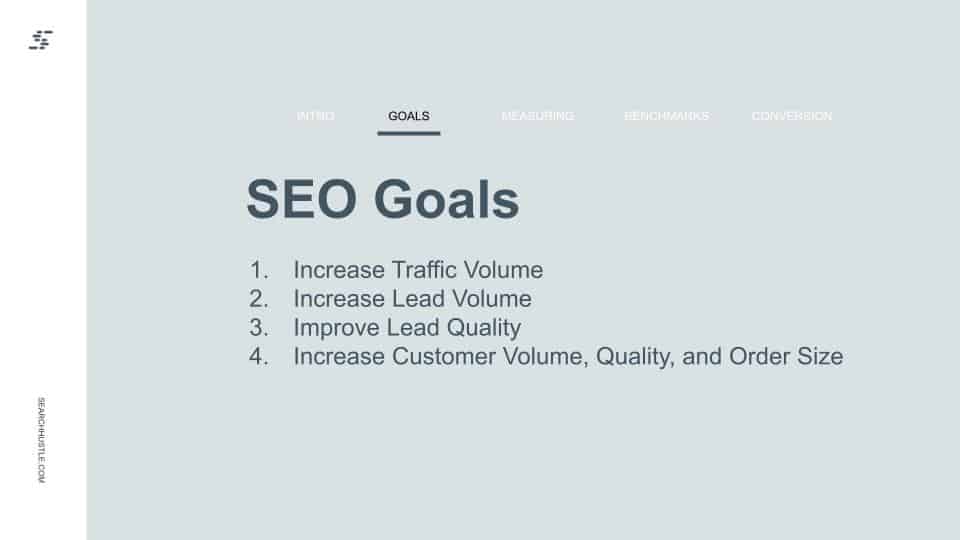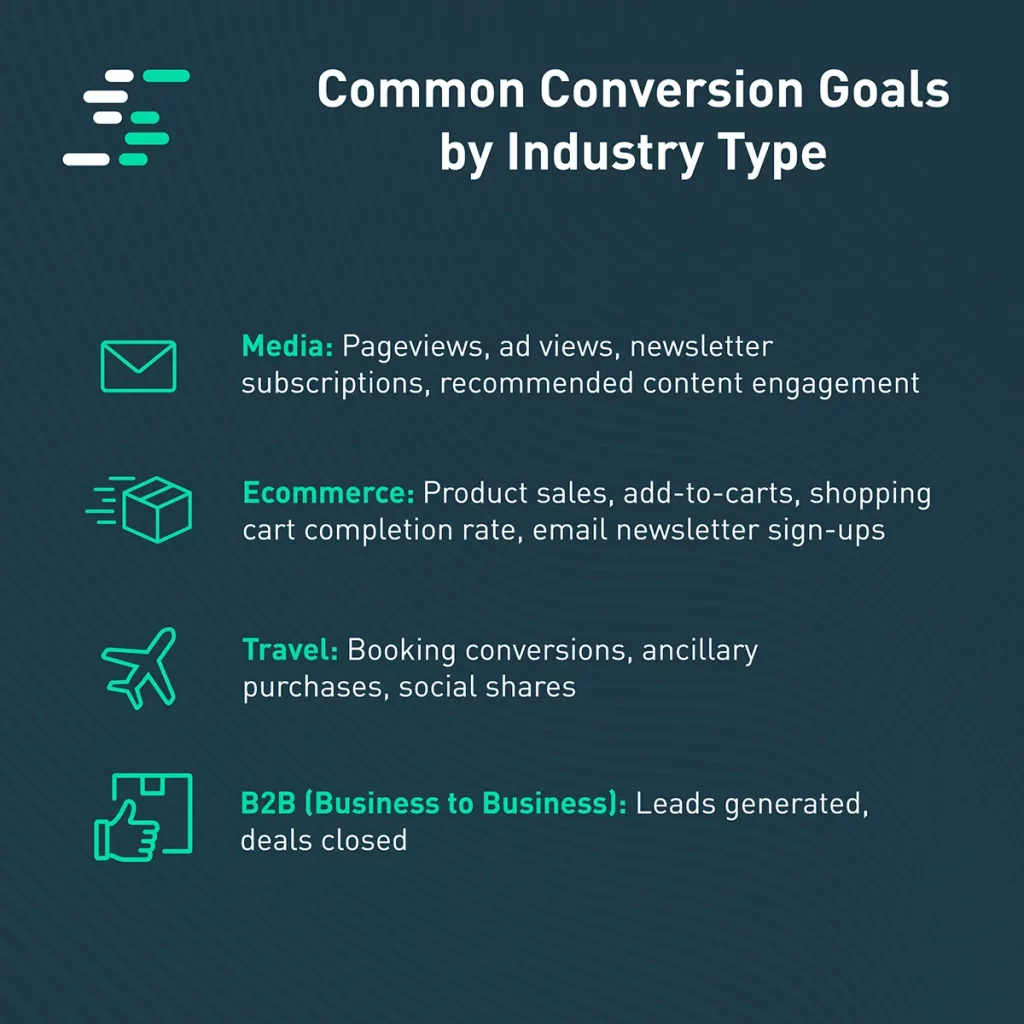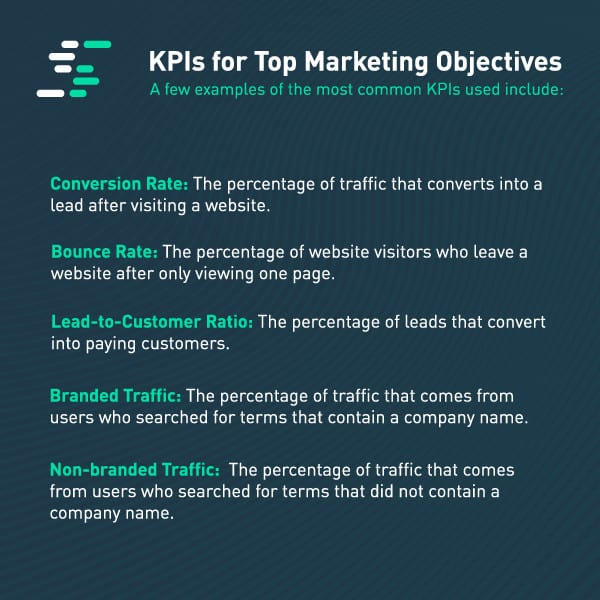Aligning SEO with Goals
Goals are everything in SEO. It’s no longer enough to write content, design a good-looking website and hope for the best. Instead, everything you do to a site should be intentional, building toward a specific goal with measurable progress reports.

Typically, the ultimate goal is increased revenue. However, you should also consider smaller goals, for example, things like brand awareness, brand trust, impressions, clicks, CTR, positioning, increasing the quality of your customers (i.e., they complain less), and raising the volume of their orders.
Digital marketing has a huge advantage over traditional forms of marketing. Television, radio, and print advertising had to rely on third-party research firms to collect data.
Nielsen is the most well-known company for collecting and monitoring consumers’ viewing, listening, and reading habits. In addition, this company provides data in the form of ratings.
Before the advent of digital marketing, Nielsen would use ratings to estimate how many people or households viewed a particular TV show or hour of radio. Advertisers could then determine the reach of their advertising campaigns.
However, this data collection method was somewhat unreliable, as it often required consumers to self-report their viewing habits. The data was also slightly dated when the marketing firm received it. You might have to wait a couple of months to have the latest ratings. So it was hard to measure if your campaign was effective.
Now, we can monitor how many consumers we reach in real-time. We can determine how many people view our content, what they look for, and even where their mouse hovers on a website and for how long. We then use this information to shape an effective data-driven marketing strategy.

Why Should I Set Goals for SEO?
Without clear, measurable goals for SEO, you cannot justify your time and effort; and your marketing strategy will be kept from reaching its full potential.
Goals enable you to determine effective strategies so you can adapt and improve. They show if you’re on the right track or not and can prevent you from changing tactics unnecessarily if the leads don’t immediately start pouring in.
You can optimize a website and its content to generate leads, but don’t expect the phones to be ringing off the hook right away from SEO alone – marketing is multivariate. So, keep any lead goals reasonable and achievable, and remember, SEO is only one part of your lead pipeline.
Increase Traffic Volume
The first goal of SEO is to increase the number of people visiting a website. Search engine optimization is about improving organic traffic. But, it needs quality traffic from users who visit your site with the right purpose.
When attracting traffic, you want to target three types of people.
- People ready to purchase your services (BOFU).
- People shop around for the best service provider (MOFU).
- People who need your services but are unsure if they’re ready to buy (TOFU).
Content should be three-fold; focusing on identifying people’s needs, informing them of your services, and convincing them they don’t need to look elsewhere. This way, you can target all three types of search intents.
Increasing traffic volume is an important goal, but you should keep your aspirations reasonable, especially since SEO is a long game that takes time to realize your ROI.

Increase Lead Volume
Getting customers on the site is only half the battle. Once a potential customer arrives, moving the sale forward is your job. Your content should seek to improve their opinion of your product or service, collect leads, and retarget customers to keep them engaged and interested.
Without a solid call to action, many customers will not feel a sense of urgency to take the next step. Your call to action could give them a phone number to call, invite them to sign-up for a newsletter, request a quote, or even buy.
The next step should always be evident in your content.
Entice customers with a loss leader if they sign-up! Discounts, memberships, and feeling like part of a community are valuable ways to get more sales in the pipeline. Online chatbots can also help.
The number of leads a site generates will fluctuate based on market trends, seasonality, offers, SEO swings, competitive forces, functionality, and more.
Improve Lead Quality
Not all leads are created equal. Some leads are considered hotter than others. A hot lead can immediately turn into a customer. A warm lead can have value – and could result in a referral or even becoming a customer with a little nurturing.
However, in some cases, too many leads can be a bad thing. For example, if you have a bunch of leads that aren’t good, the last thing you want is for your sales team to waste time calling and pitching to low-quality leads who were never interested in purchasing in the first place.
Automation makes the quality of your leads less critical. It does not take additional effort or resources to continue to send automated content to a cold lead. One day, they may eventually turn into customers. Email marketing helps you stay in front of a prospect’s mind – if done right.
Here are a few strategies to improve your lead quality.
Target Personas
Targeting specific demographics, geographics, psychographics, and behaviors can help, particularly with ad campaigns. For example, income targeting can determine which leads can afford your product or service.
Remarket to Site Visitors
Remarketing keeps people in the funnel by showing ads to those who have:
- Already visited the site
- Interacted with TOFU ads
- Searched for your services
- Completed another retargetable action
Call Tracking
Call tracking is a great way to gain insights into the lead quality and the type of people calling your sales team. Find out:
- How they found you
- What they were searching for
- What made them think your business could help
Use this qualitative data to refine your targeting strategy.
Qualifiers
Be explicit that your services are designed either for commercial or residential clientele. This can eliminate pointless phone calls, form fill-outs, or calendar appointments.
Upfront Pricing
Some believe mentioning prices can be off-putting for those who prefer to build relationships. They feel it’s tacky to discuss pricing before developing a relationship. However, upfront pricing can also be helpful. If your company is the high-volume/low-cost option (think Walmart), then it can be helpful to offer prices upfront. Price-sensitive shoppers will likely compare your price to others, and you’ll win.
Conversely, your customers are less price sensitive if your business is a low-volume/high-cost model (think Apple). Sharing your price can weed out leads who would be unlikely to purchase your product anyway.
Increase Customer Volume, Quality, and Order Size
You’ve improved your web traffic and are qualifying leads effectively with a squeeze page or landing page – now you need to turn them into customers. First things first, you need a quality sales team and process. SEO is not your sales team. Traditional sales still matter.
Increasing customer volume (lead to sale) can improve your conversion rate on the phone lines (scripting and processing). In addition, chatbots and email automation can help warm up leads (from frigid to cold) to get them ready for a phone call; which, in turn, helps your sales team improve their close rates
Measuring Targets (Sales, Leads)
What are the team’s goals?
The whole team, from the social media manager to the web developer, advertisers, copywriters, technical SEO person, and photographer, should each be able to give a corresponding answer as to what short, mid, and long-term goals the team is working toward.
You should track KPIs, such as site traffic, hot/cold leads, conversion rates, sales, average sale size, return rates, and cost to acquire a client (CAC). Here are additional questions to ask.
- How many are leaving reviews?
- How many are referring new clients?
- What is the LTV of a client?

Set KPIs for Top Marketing Objectives
Once you settle on which marketing objectives to target, find a way to measure them.
For any set goals to be successful, KPIs and benchmarks are needed. Therefore, you should assign numbers, metrics, and deadlines to each marketing objective.
By setting KPIs, it is much easier to evaluate if progress is being made. Knowing whether you’re on track to achieve the marketing objectives is impossible without benchmarking.
You should track KPIs, such as site traffic, hot/cold leads, conversion rates, sales, average sale size, return rates, and cost to acquire a client (CAC). Here are additional questions to ask.
- How many are leaving reviews?
- How many are referring new clients?
- What is the LTV of a client?

A few examples of the most common KPIs include:
- Conversion Rate: The percentage of traffic converting to a lead after visiting a website.
- Bounce Rate: The percentage of website visitors who leave a website after only viewing one page.
- Lead-to-Customer Ratio: The percentage of leads that convert into paying customers.
- Branded Traffic: The percentage of traffic from users searching for terms containing a company name.
- Non-branded Traffic: The percentage of traffic from users who searched for terms that did not contain a company name.
Establish Benchmarks
A benchmark is a point of reference against which to compare something. Identify the best of the best in your industry or business and your competitors, then measure your digital traction against them.
Regarding SEO, the essential benchmark is how well you stack up for target queries. Third-party tools like AHREFS, SEMRush, and Open SEO Stats can help you understand competitors’ keyword targets. Additionally, GSC is important to understand query targets and performance. Then, with the right tools, the SERP rankings are easily discoverable.
Web traffic alone is pointless. Remember, it all starts with an impression. Impressions lead to clicks, then leads, then sales. So make it easy on your marketing team, and track everything that feels like a convertible action. Track the number of calls from your GMB or website, form submissions, downloads, and any other action that is an apparent motion down the company’s funnels.
Conversion Rates
There are lots of different conversion rates to track. Product landing page clicks/leads, service landing page leads/sales, location landing page impressions/clicks, etc. Most pages of your website (not all are SEO hungry) should have a purpose. As page-by-page goals change, remember these few obvious goals: more phone calls, more downloads, more signups, and more leads. Track conversion rates and retool them to optimize conversion potential.

Ready to Take Your Search Hustle Further?
Search Hustle walks you through the same process that we’ve used with hundreds of businesses to increase their websites ability to make money, including lead generation and e-commerce businesses that we’ve helped reach consistent seven-figure revenues.



